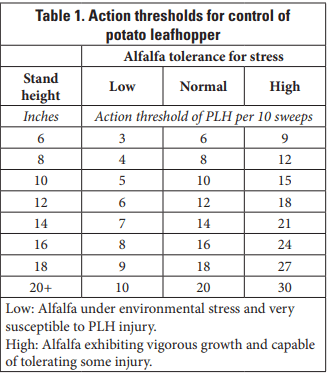Agronomic Crops
Corn and soybeans are emerging and beginning to progress through early vegetative stages. Within the next week or so we will begin doing stand counts and encourage you to do the same. We will also keep an eye out for early season insect and pest problems such as slug damage and bean leaf beetle feeding in soybeans as well as slug feeding, cut worm damage and flea beetle activity in field corn.
In alfalfa most of the fields we are scouting are now in regrowth after first cutting. These second cutting fields have very limited pressure from weevil larvae and overall are relatively problem free. In the coming weeks, we need to be alert with regard to the potato leaf hopper. According to the most recent C.O.R.N. newsletter, potato leaf hoppers are now being found in Ohio alfalfa fields. We plan on starting with sweep net counts this week to determine current populations of PLH in our area fields.
Vegetable Crops
Insects continue to be the main headline in the vegetable crops in our area. Of greatest concern is the cucumber beetle. The populations continue to increase in number and the efficacy of seed treatments or in-furrow applied insecticide starts to decline 4-6 weeks after the seed germinates or after the insecticide is applied. This means that more of the beetles are feeding without being affected by the insecticide. Be sure to scout cucurbit crops frequently and carefully to get accurate counts of the beetles. The thresholds for cucumber beetles are as follows: Cotyledon stage – .5 beetles per plant, 2-4 leaf stage – 1 beetle per plant, greater than 4 leaves – 3 beetles per plant. Limiting the amount of feeding that cucumber beetles do will also limit the amount of bacterial wilt occurring in these plantings. Do be cognizant of the plants that are in bloom and limit your spraying to a time when it will be least impactful on the pollinators.
Other insects that were spotted this week include Colorado Potato Beetle larvae and imported cabbage worms. Both of these pests can cause significant damage in their respective crops when left unchecked. Flea beetles also continue to feed on plantings of cole crops, preferring young transplants versus older, more established plantings, although both should be inspected for beetles.
Sweet corn plantings are growing quickly and some plantings that were done into plastic mulch and covered this spring already have a few tassels poking out. Overall, there has been no major concerns in the sweet corn plantings so far, however, do your best to keep up on weed control. Weeds such as bindweed, thistle, and ragweed can not only compete for resources, but can also make harvest difficult and may serve as refuge locations for insect pests to retreat to.
Small Fruit and Orchards
We are beginning to enter a critical period for managing diseases in grapes. This period, which extends from immediate pre-bloom through four to five weeks post bloom, is a critical time to control fruit infections by the pathogens which cause black rot, powdery mildew, and downy mildew. According to the 2021-2022 Midwest Fruit Pest Management Guide, the fruit of the most commonly planted varieties becomes resistant to infection by these diseases by four to five weeks after bloom.
In strawberry plantings we are seeing a lot of green fruit and in some locations, harvest is beginning to ramp up. Overall, there have been very few concerns in the
strawberries to this point, with just a few slugs here and there and a spotting of powdery mildew on a few plants. Powdery mildew is managed by spraying either pre-bloom or during the early bloom through bloom stage.
Other small fruit like blueberries and brambles look to have a heavy fruit set this year. Blueberries are beginning to get some color to them, and the blackberry and raspberries are either in bloom or in fruit development.
In apple and peach orchards, the fruit are noticeably starting to increase in size. We are finding some aphids in apple trees, feeding on the leaves and new shoots. In peaches, we did find a few instances of powdery mildew affecting the fruit. Trap counts for OFM and CM were under threshold in all of our traps this week. The counts are down after last week with several orchards above threshold for CM and OFM counts.















